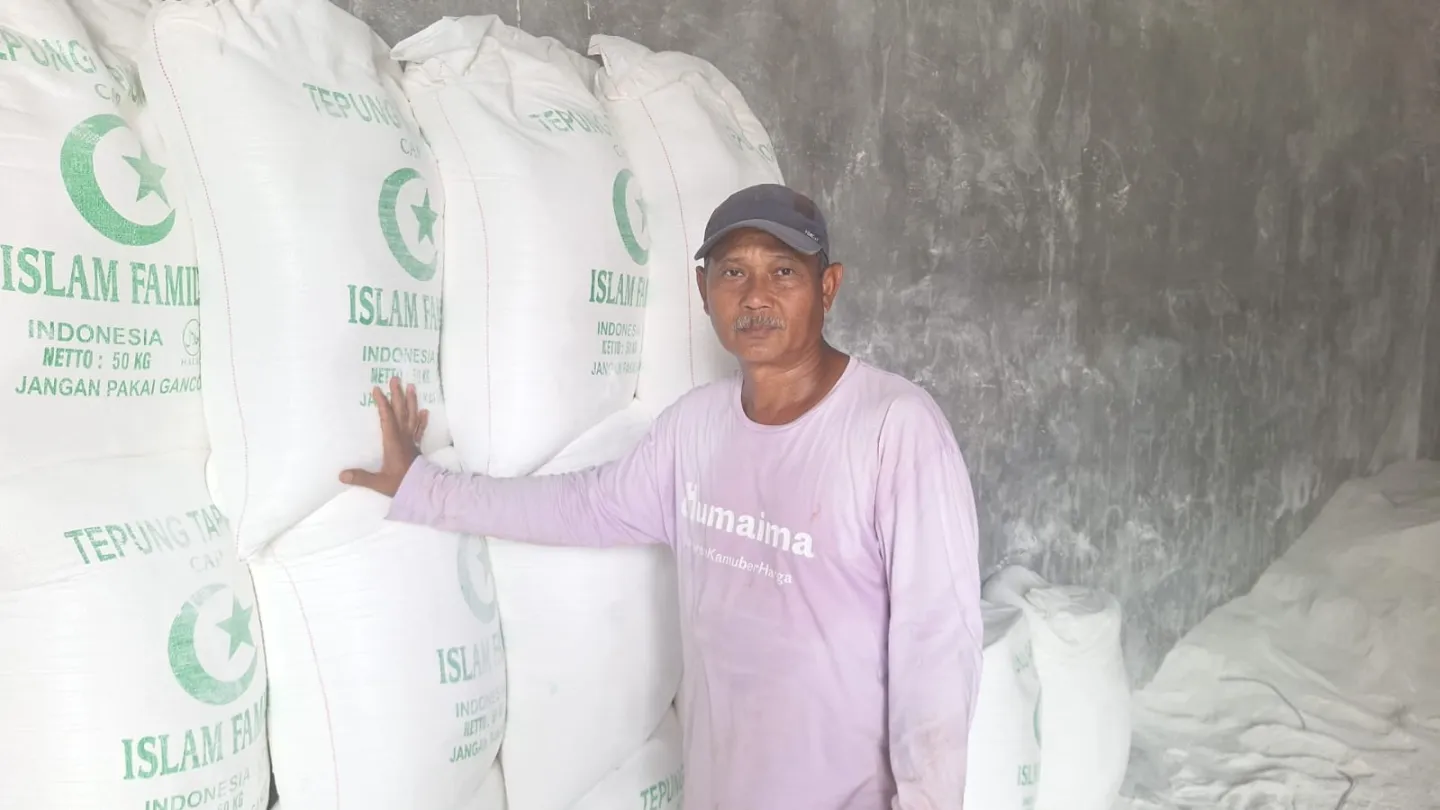Sri Hatiningsih, a Credit Administration Staff member at Rural Bank (BPR) Artha Huda Abadi (AHA), is diligently reviewing and processing credit applications from BPR AHA’s clients. Based in Pati, Central Java, the bank primarily supports local micro, small and medium enterprises (MSMEs).
Now, she completes her evaluations and finalizes credit approvals within minutes.
“It used to take me at least 30 minutes to process each client. Now, I need only five,” Sri explained, emphasizing the speed and efficiency made possible by recent upgrades to BPR AHA’s core banking system (CBS).
Since late 2024, BPR AHA has received technical support to upgrade CBS from the ILO’s Promoting SMEs through Access to Digital Financial Services–Phase 2 (Promise II Impact) project, supported by the Swiss State Secretariat for Economic Affairs (SECO). The intervention is part of the Promise II Impact’s broader strategy to integrate MSMEs into value chain ecosystems and expand access to digital financial services in underserved areas.
The upgraded CBS has streamlined application processes and significantly boosted the bank’s efficiency. Real-time credit assessments and simplified loan application interfaces now enable staff to quickly verify customer information, reducing administrative delays and minimizing documentation errors.
In just six months, BPR AHA has achieved notable growth, onboarding 591 new credit account holders and 299 new savings and deposit clients. These numbers reflect not only expanded capacity but also greater inclusion—reaching informal workers, micro-entrepreneurs, and rural households previously excluded due to limited collateral, financial history or digital literacy.
One satisfied client is M. Islam, a snack distributor and tapioca flour supplier. A loyal customer since 2019, he shared how loan applications used to take up to two weeks. “Now I can complete everything in one week and submit documents online. It helps streamline my business planning,” he remarked.

M. Islam, a loyal BPR Nusamba Cepiring cistomer, now secures business loans in a week, boosting his snack and tapioca distribution.
H. Dliaul Khaq, Director of BPR AHA, emphasized that the CBS upgrade came at a crucial moment, coinciding with new regulatory requirements from the Financial Services Authority (OJK) that introduced more complex accounting standards. The new system replaced manual, time-consuming tasks—previously prone to inconsistencies caused by network instability and system errors—with automated, real-time data collection and reporting, ensuring timely and accurate submissions.
Beyond compliance, the upgraded CBS has enhanced institutional accountability in client services and business development. It has also significantly improved workload management and occupational safety.
“Since the upgrade, faster transaction speeds and improved system reliability have reduced overtime, allowing employees to complete their work on time and maintain a healthier work-life balance. This shift has boosted staff morale, lessened fatigue and supported safer, more sustainable working conditions as key aspects of decent work,” Dliaul continued.
Notably, the transformation fostered a data-driven and inclusive workplace culture: staff are now trained to use real-time dashboards and analytics tools, shifting decision-making from intuition to evidence-based approaches. This shift has strengthened transparency, cross-department collaboration, and operational confidence, while empowering employees to track performance, anticipate client needs, and drive innovation.
Djauhari Sitorus, Programme Coordinator of ILO’s Promise II Impact Project, praised BPR AHA’s commitment and progress in expanding access for remote and rural clients through digitalization. “The partnership between the ILO and BPR AHA shows how targeted digital investments in rural banking can drive systemic improvements that enhance efficiency, promote decent work and create more opportunities for MSMEs in underserved regions.”
